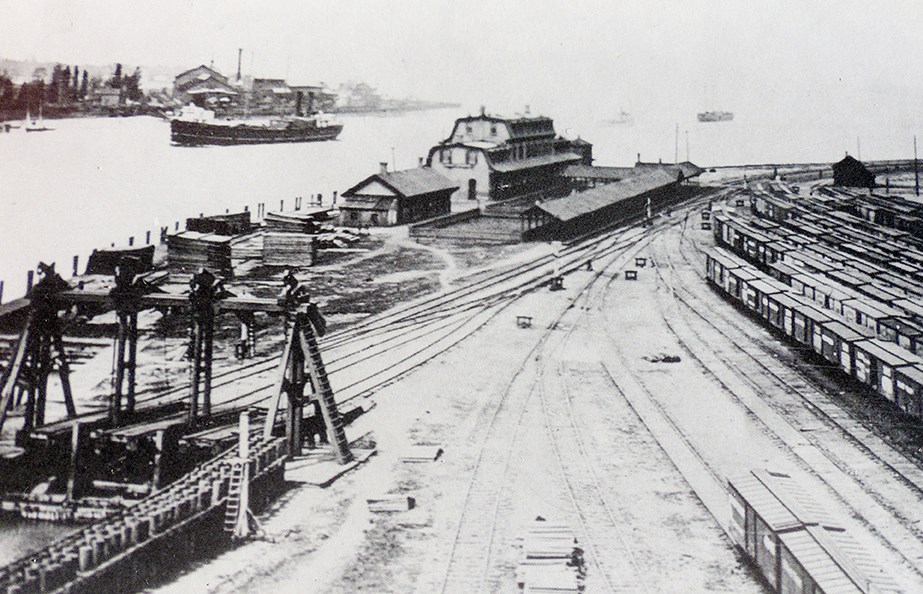George Mathewson
In the shadow of the Blue Water Bridge lies Point Edward’s Waterfront Park, a place famed for its French Fries and freighters.
The park fronts onto Livingston Street, and is probably the most photographed place in Sarnia-Lambton.
But the greenspace enjoyed by residents today was once the terminus of the Grand Trunk Railway, a sprawling industrial landscape dominated by smoke-belching engines and squealing steel wheels.
It boasted a hotel and restaurant. There were freight sheds and an immigration compound, a roundhouse and livestock yards.
Grain elevators rose 14 stories, almost as high as the bridge today, and 36 locomotives chugged over 17 different lines of track.
The enterprise was the lifeblood of the community, and among the tradespeople and merchants sustained by it was one Dugald Livingston, for whom the street is named.
Livingston was a grocer by trade and one of the village’s most public-spirited citizens, according to The Point, a history by journalist Orlo Miller.
In the year that Point Edward was incorporated, 1878, Livingston cleared and extended Michigan Avenue all the way to Murphy Road, connecting the hamlet’s main drag with the Lake Huron shoreline and points to the north.
For his effort, the railway presented Livingston with a $400 cheque, worth about $10,000 in today’s money.
With independence came the Point’s first municipal vote, and residents elected Livingston as reeve to head a five-member council.
Today, the hotel is long gone, the tracks ripped up.
But the location of the shipping docks can still be seen in rows of wooden spilings in the river.
And if you look, you can still see several homes on Livingston and Fort streets, built from 19th century yellow brick, which once housed the workers of the Grand Trunk Railway.
